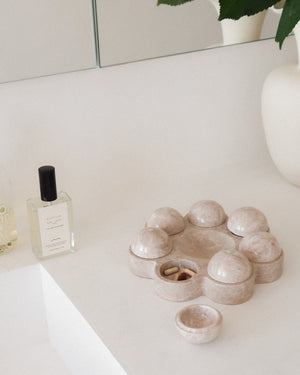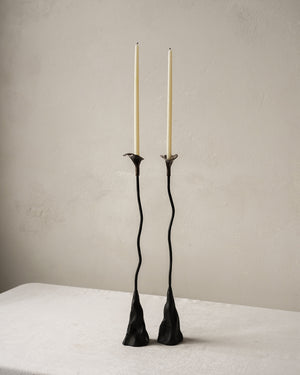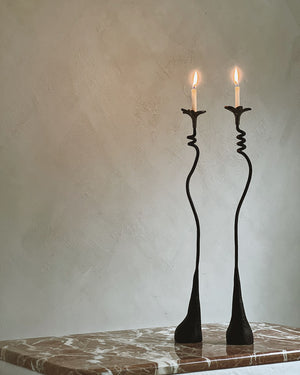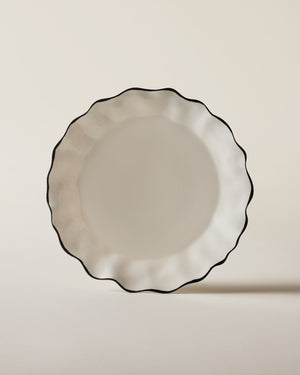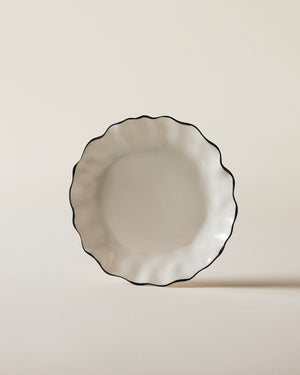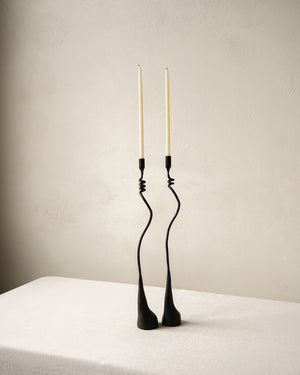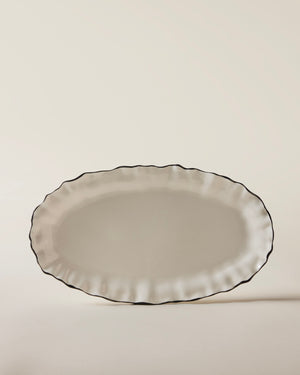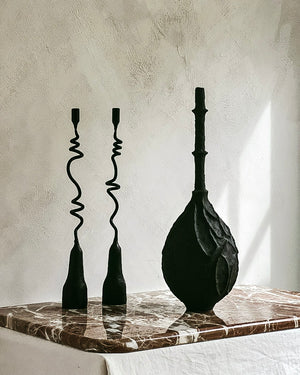AT HOME W/ JANIE KRUSE GARNETT
Words by Brienne Walsh
Photography by Max Burkhalter
Florals by Asmite Gherezgiher
 |
Growing up in a home in Westchester County, New York, without a television set, Jane Kruse Garnett was encouraged to play outside to stave off boredom. "Everyone else my age group was playing computer games, and my mother was like, 'Go outside, eat dirt,'" recalls Garnett. Inspired by books such as the adventure series "Swallows and Amazons" by Arthur Ransome, and the fantasy novels of Elizabeth Goudge, Garnett spent many a happy day building houses out of twigs and grass for the fairies who lived by the stream in her mother's garden. Her fantasies were fueled by her parents, who descended from art collectors and rumored spies and would travel to seven different grocery stores just so their daughter could try a persimmon she read about in a book.
HER FATHER'S INTEREST IN CLASSICAL ARCHITECTURE WAS ANOTHER GUIDING FORCE.
 |
 |
Garnett never stopped wanting to make fairy houses. "As an adult, you can't really have twig houses in your home or apartment because that's weird," she laughs. So instead, working under her own name, Garnett makes tableware, cufflinks, and jewelry out of silver, gold, and precious gemstones. "It's the exact same process [as the fairy houses] except now I do them with wax and cast them in precious metals," she says. Her line of objects also includes silk scarves and cashmere shawls emblazoned with classical architectural elements and landscapes redolent of Slim Aarons, as well as bed linens designed for spending long days in your country house, reading in bed.
 |
Garnett's first foray into design came when she was a student at Central Saint Martins – University of the Arts in London in 2012. While spending the weekend at a friend's home in Hampton, she observed a group of women leaving their Louis Vuitton luggage out on the terrace so that it could be "broken in" by the sun. She realized at that moment that she wanted to make jewelry that was similarly imbued with patina. Objects that were precious but not sacrosanct, worn with ease while digging in the dirt or having cocktails, passed down through generations. "You're meant to live in [my jewelry], and it's good that you live in it," she says. "The aesthetic already makes you feel elegant regardless of what your fingers look like."
"I HAVE ALWAYS IDENTIFIED AS THE SECOND SON OF SOME SORT OF FADING BRITISH ARISTOCRATIC FAMILY THAT HAS GOOD ANTIQUES, BUT THEY'RE NOT THE BEST ANTIQUES" |
 |
Ideas for projects come when Garnett notices gaps in the market for luxury goods. For example, she began designing silk scarves to stop borrowing her male friend's pocket squares to tie back her hair. She began designing tableware when she noticed that friends included costly but poorly constructed objects such as silver-plated serving spoons on their wedding registries. "If I'm going to spend $500 on something, I want it to last forever and not lose half of its value when they open the box like a Ferrari," she says. Garnett, who was raised by women with impeccable eyes for art and antiques, wants to create valuable items that stand the test of time. "I have always identified as the second son of some sort of fading British aristocratic family that has good antiques, but they're not the best antiques," she laughs. For LES Collection, Garnett has designed a tabletop collection cast in bronze and studded with diamonds. The collection includes pieces like a raw bronze catchall with diamonds and rock crystal and a set of paper fan napkin rings, all inspired by the crafts of Garnett's youth, little paper rips and twists, berries, and pebbles foraged through a day spent combing for treasures in the woods. While designing the objects, Garnett asked herself the question: "What would Daisy Buchanan be buying?" The resulting pieces, which are both organic and deliciously luxurious, were inspired by the finishes on jewelry designs by Hemmerle and are meant to bear the patina of the hands that use them as they are passed down through generations. "They're art that you can live with," she says. So it doesn't take much imagination to see the napkin rings used in a forest feast set out by Fairy royalty.
 |
 |
Garnett's lived-in but elegant and educated aesthetic extends to her apartment in Dumbo, Brooklyn, which is full of artwork and antiques sourced from her family, as well as London's Portobello market and art galleries on the Upper East Side. "Most of the art I've collected I've either stolen from my mom and dad's attic or found in my grandmother's basement," she says. The artworks range from equestrian prints to paintings of foxes and 1970s interiors.
"APPARENTLY, I AM VERY INTO 1920S RUSSIAN EXPRESSIONISM," GARNETT LAUGHS. "AND I'M ALSO A BIG DISCO BABY"
When choosing pieces of furniture for her home, she leaned heavily on friends of the family with deep knowledge of the antique business. For example, Garnett's sister's godfather is Clinton Howell, a renowned dealer of English antique furniture and decorative objects. "He can look at something, and say, clearly this is from the 1830s because a worm ate all of the rosewood in 1829," Garnett says. "He's like the Criminal Minds CSI for antiquities." One of the centerpiece objects in Garnett's apartment, a Queen Anne Black Lacquer Lady's Slant-Front Desk, was a Christmas present from her mother, who bought the object at an auction of the late interior designer Mario Buatta's personal collection at Stair Gallery in March of 2020. Garnett's mother had known Buatta since childhood when she received letters from him sent from the health spa. "They would read like, 'SOS, they're trying to kill me, please send truffles, please send Teuscher chocolates, please send spaghetti,'" Garnett recalls. Garnett relates very much to Buatta's design philosophy. "He was a big champion for a fine layer of dust to protect your antiques," she says, adding: "He was just a rumbly luxury guy, which makes me feel less alone in my approach to haphazard, high-end things that are just very fun to play with."
 |
Garnett is ultimately most influenced by the strong, independent women in her life, especially her mother, who would often return from cocktail parties in gorgeous regalia and start weeding her garden. "I grew up with a sort of get it done mentality mixed with the belief that if you are living with something, it ought to be really beautiful to you," Garnett says. Who needs fairies when you were raised by women like these?
SHOP JANIE KRUSE GARNETT:
|
Paper Screws Serving Set |
Paper Fan Napkin Ring Set |
